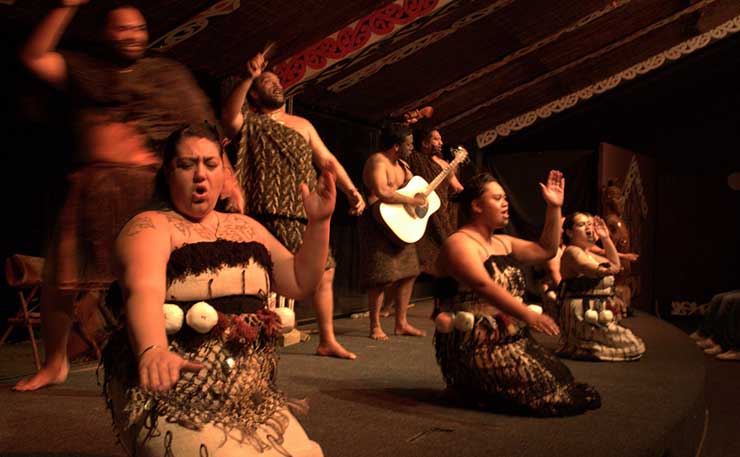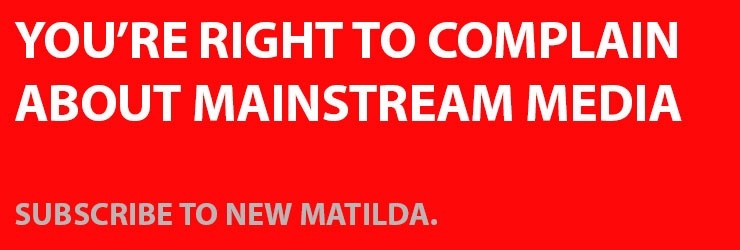In New Zealand, the Maori are a revered part of mainstream culture. Meanwhile, in Australia… Melinda Morris explains.
The Daily Telegraph and your friendly neighbourhood bigot were outraged this week that UNSW has ‘rewritten’ Australian history by describing the arrival of Europeans as an invasion.
In a post-Mabo world, almost 10 years after Kevin Rudd said ‘sorry’, most Australians would agree with the confusingly contentious terms applied by UNSW when describing the birth of our illustrious nation. And when Australia’s answer to genital warts, KIIS FM’s Kyle Sandilands, chimed in to further deride the ‘wankers’ at UNSW for their commitment to historical accuracy, many of us rolled our eyes and bemoaned the state of the country.
But this ridiculous display of racism, ignorance and blind commitment to a false history of our nation hides a far more insidious threat to equality in Australia. The fact is, First Nations people have been systematically ignored by mainstream culture from the first tentative steps of colonisation through to today.
Sure, we’ve moved past the idea of terra nullius – that Australia was a huge, empty land just ready and waiting for European settlement. Most of us would now agree that yes, Australia was invaded. Aboriginal and Torres Strait Islander Australians had been living on this land for tens of thousands of years. There were multitudes of languages, cultures and peoples that were decimated by the invasion of European colonists. But despite this acknowledgement of the brutal truth of our shared history, First nations people remain almost invisible in modern culture.
On a recent first time trip to New Zealand, I was simultaneously impressed at the widespread acknowledgement of Indigenous cultures, and ashamed at Australia’s apparent inability to follow suit.
As soon I arrived in New Zealand, I met with the Maori greeting of ‘Kia Ora’ that has now entered into New Zealand English. I turned on the TV at my hotel and I saw Maori actors, news presenters – people were even speaking the Maori language ON THE TELEVISION. And it struck me for literally the first time just how invisible First Nations peoples are in Australia.

They are rarely present in the media, the arts, or in positions of power in the Government or the private sector. The inequality that First Nations people face is widely known, but also widely ignored. We denounce human rights abuses in other countries, and at the same time we ignore the poverty stricken Aboriginal communities living just out of sight of prosperous mainstream Australia.
Indigenous languages are left to languish and die, unacknowledged by mainstream Australia while the descendants of the first peoples try desperately to retain and revive their ancient cultures their languages and their identities. Instead of traditional place names, we have imported British and European names like Dartmoor, Daylesford, Derby and Denmark. And that’s just the letter D.
The most shocking part of my revelation was the fact that the First Peoples of Australias are so invisible, until arriving in New Zealand I didn’t even consider that it doesn’t have to be this way.
There are deep and divisive inequalities that exist in Australia between Indigenous and non-Indigenous communities. In 2008, the Australian government made a formal commitment to address Aboriginal disadvantage. It was called Closing the Gap.
The Gap refers to a vast swathe of health, education and cultural inequalities that exist between Indigenous and non-Indigenous Australians. Aboriginal people have a shorter life expectancy, higher rates of infant mortality, poorer health in almost every measure and lower levels of education and employment. Aboriginal people are more likely to experience mental illness and substance abuse, more likely to commit suicide and they are far more likely to be incarcerated.
The Gap is not closing, and we can’t begin to close it while First Nations people continue to remain invisible, to be an afterthought – a vague sense of social injustice happening somewhere, but not here. Not in front of us.
I’m not saying that New Zealand is a perfect role model for Indigenous relations. There is inequality in New Zealand as well. There is racism too. But in New Zealand, Maori culture is visible.
New Zealanders are constantly reminded that the land is shared between Indigenous and non-Indigenous cultures. It might not always be equal, but with visibility and transparency comes accountability – and when individuals are accountable for societal inequality, there is a chance it might be addressed. Non-Indigenous New Zealanders are accountable to their Maori neighbours on a daily basis.
Meanwhile, Australians balk at the very idea that Indigenous cultures existed in this land and were invaded by European colonialists.
The First Australians are so invisible that historical fact is apparently still up for debate.
Donate To New Matilda
New Matilda is a small, independent media outlet. We survive through reader contributions, and never losing a lawsuit. If you got something from this article, giving something back helps us to continue speaking truth to power. Every little bit counts.





